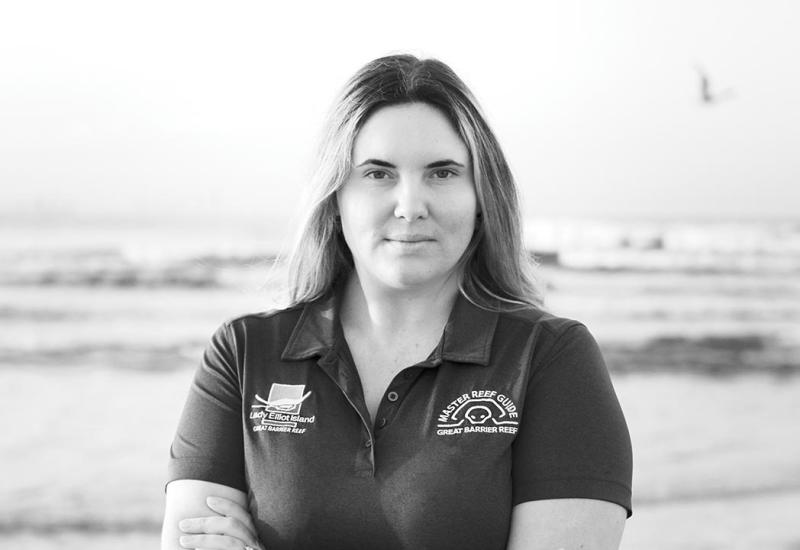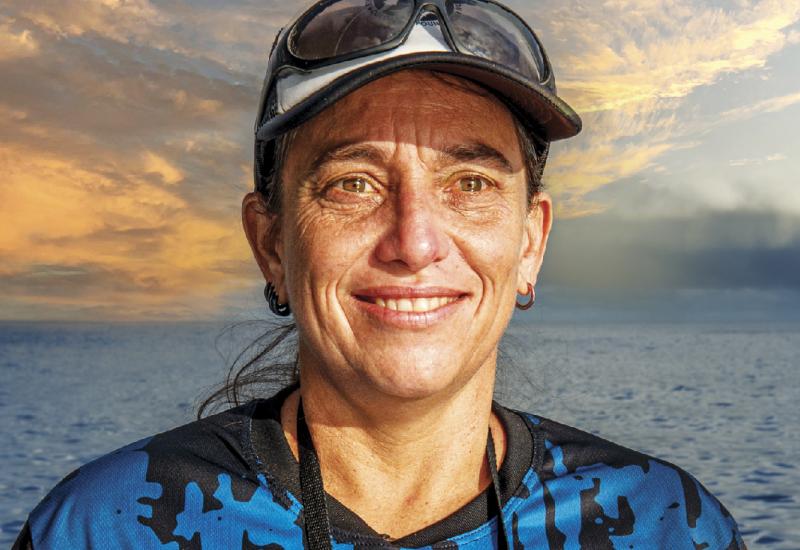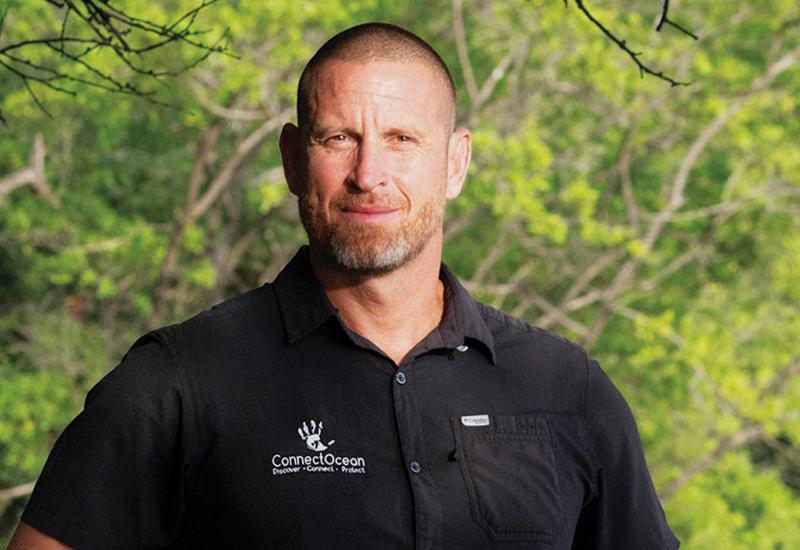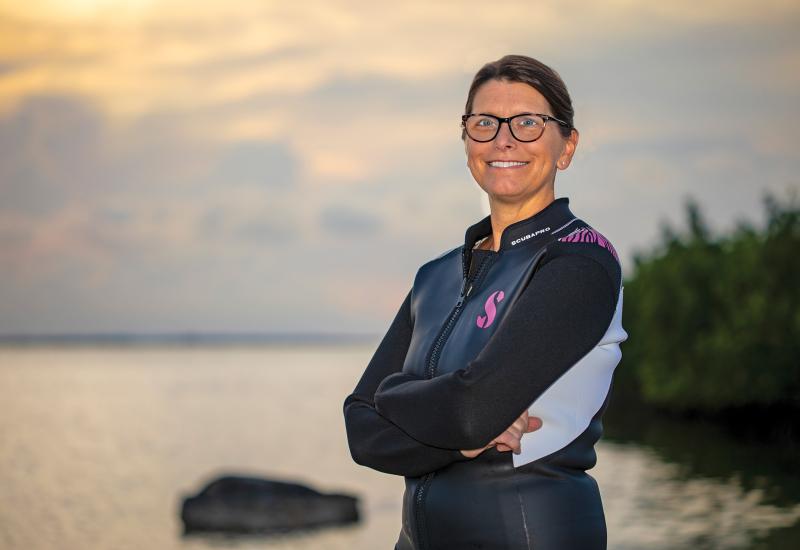Oceanographer Antonio Mignucci Named January Sea Hero
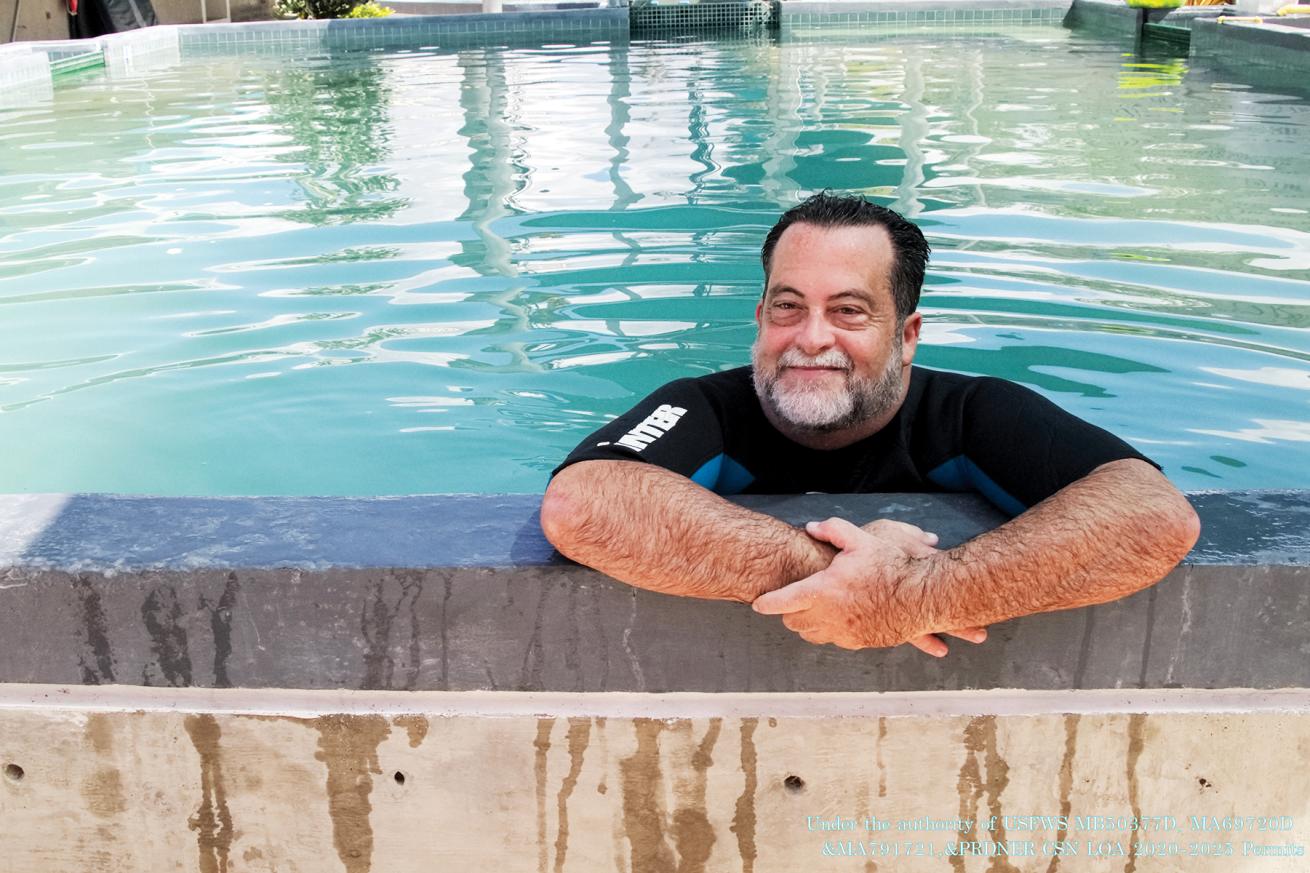
Courtesy Caribbean Manatee Conservation Center, Under Fws Permit Number MA69720DA portrait of Antonio Mignucci
YEAR DIVE CERTIFIED : 1986
AGE WHEN CERTIFIED: 22
DIVE CERTIFICATION LEVEL: Open Water
WORDS TO LIVE BY: “It is not the critic who counts; not the man who points out how the strong man stumbles…. The credit belongs to the man who is actually in the arena, whose face is marred by dust and sweat and blood, who strives valiantly, who errs, who comes short again and again… but who does actually strive to do the deeds… who spends himself in a worthy cause, who at the best knows in the end the triumph of high achievement, and who at the worst, if he fails, at least fails while daring greatly, so that his place shall never be with those cold and timid souls who neither know victory nor defeat.” —Theodore Roosevelt
For more than 38 years, Antonio Mignucci has contributed to longterm and meaningful solutions through his research and fieldwork. An oceanographer and certified aquatic veterinary technician specializing in biology, health and conservation of aquatic mammals, Mignucci founded and directs the international nonprofit organization Red Caribeña de Varamientos (Caribbean Stranding Network) and the Caribbean Manatee Conservation Center, both of which are dedicated to the care, treatment and rehabilitation of endangered or threatened marine mammals. Additionally, he shares his knowledge with new generations of conservationists as a professor of marine biology at Inter American University of Puerto Rico. Through his extensive community outreach campaigns in Puerto Rico, Mignucci has helped to enact local legislation for one of the mammals he cherishes most, the manatee, and those protections have even helped safeguard other marine species in the region.
For his conservation work, mentorship and community involvement, Antonio Mignucci is our January Sea Hero.
Related Reading: Stella Diamant Recognized as November's Sea Hero
Q: What led you to found the Caribbean Stranding Network?
A: I was beginning my doctoral studies in oceanography, specializing in aquatic animal health, when a couple of live dolphin strandings occurred in Puerto Rico. At that time, I was the only marine mammalogist on the island, so I had to deal with the care of the animals. One was an adult Atlantic spotted dolphin (Stenella frontalis), and inspired by the full moon that night, we named her Luna. She died a few days later, which truly made us realize the void we had for properly dealing with stranding cases. Luna was the one who motivated us to create the Caribbean Stranding Network.
Q: Working with injured and deceased animals isn’t for everyone. Is your work challenging because of its nature?
A: It is a three-fold situation. We are dealing with charismatic species that everybody loves. They are protected species. And in the case of some whales and sea turtles (and certainly manatees), they are endangered. Their survival depends on us. Even when we work with post-mortem examinations or as a veterinary hospital, we focus on the specifics of these species, their survival and the threats that hinder their future well-being. Understanding why they die through necropsies and veterinary care is enough for us to feel happy intellectually and emotionally.
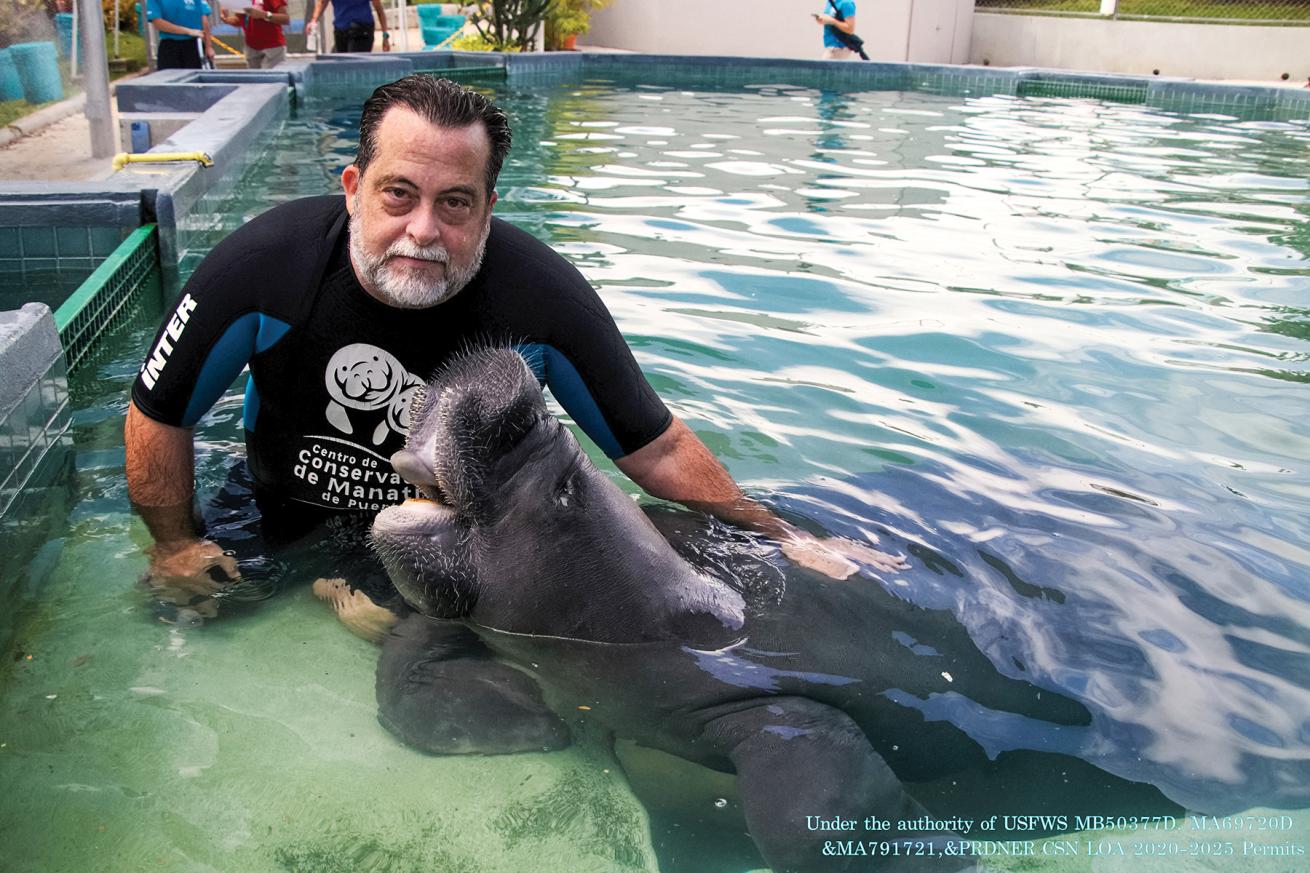
Courtesy Caribbean Manatee Conservation Center, Under Fws Permit Number MA69720DMignucci poses in the water with Guacara, a wounded manatee he helped care for after it was struck by a boat.
Q: You’ve been recognized for your work and research with many marine species. Why are manatees so special to you?
A: I have been lucky enough to work with whales, dolphins, seals, sea turtles, pelicans, and other sea and coastal birds, but manatees have a special place in my heart, because their survival is in peril. They need all the help we can muster to ensure they stay and thrive in our world for centuries to come. Manatees are still hunted illegally in other parts of the world. In Puerto Rico, many die from boat and jet ski collisions, others by increased disease. Manatees serve as sentinels of coastal health. What happens to them could happen to us. Thus, our survival is linked to their survival.
Related Reading: David Martin Recognized As October's Sea Hero
Q: How does your work as a professor differ from your work at the Caribbean Stranding Network and Manatee Conservation Center?
A: My assignment as a tenured professor of marine biology at Inter American University complements my work as director of the Center. Most of my students volunteer at the Center at all levels (bachelor’s, master’s, and doctorate), and my teaching is usually hands-on when working on aquatic patients or while conducting research. I was taught that way during my doctoral studies; I enjoy it and see that it is more effective [than a traditional classroom lecture]. Learning by doing.
Q: What do you hope your students take away from classes with you?
A: I want my students to be independent and learn by practicing, getting their feet wet (and salty), self-reading and studying. A professor is just the spark to get the student started; they must do the rest and return for guidance and clarification when they get stuck. Above all, I want my students to be inspired by my passion and commitment to saving the ocean and its creatures, particularly those who need extra help, like the manatees, dolphins, sea turtles and pelicans.
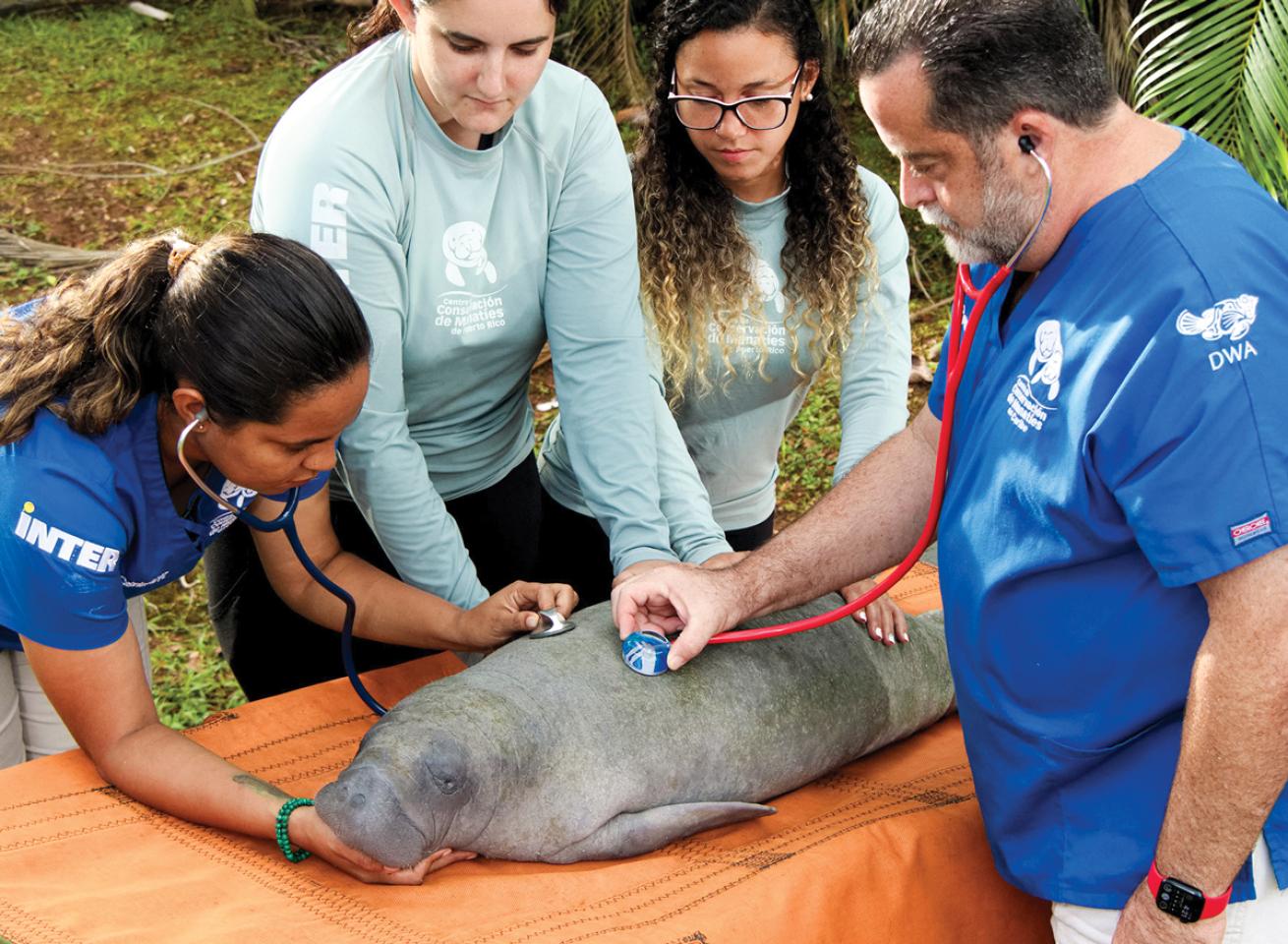
Courtesy Caribbean Manatee Conservation Center, Under Fws Permit Number MA69720DMignucci demonstrates proper examination techniques on a young manatee.
Q: What is the greatest challenge in marine conservation today? How is this reflected in your work?
A: Our greatest challenge is making people aware that their actions toward the oceans and species that live within have consequences, and that with empathy,we all can change detrimental actions into positive conservation behaviors. We need a sense of responsibility for the environment, the oceans and the species.
Q: What has been your most satisfying moment?
A: I released my first manatee, Moisés, in 1994. He was rescued a couple of years before as a two-week-old calf whose mother was butchered for meat. Moisés is still alive, now some 32 years old, living free on Puerto Rico’s east coast. Every time somebody sends me a picture of a manatee from the east coast, and I see on its chest the specific white birthmark that tells me that it is Moisés, my heart fills up as a proud parent able to rest now that my “child” is doing well and surviving in the world—and hopefully bringing grandkids soon!
Q: What's been your most surprising moment?
A: My most surprising moment was discovering the phenomenon of stray arctic seals in the Caribbean between 1993 and 2001. I had advocated for the re-discovery of the extinct Caribbean monk seal, hoping to find it, given numerous sightings of unidentified seals in our tropical waters. Lo and behold, one landed on Puerto Rico's north coast in 1993, followed by another in 1996, and a group of eight in 2001 throughout the Caribbean. They were hooded seals from the Gulf of Saint Lawrence in Canada and Greenland. We successfully saved one and released him back to the wild a few years later on the coast of Maine.
Q: Who are your "sea heroes"?
A: As a child, my sea hero was Jacques Cousteau, as his TV program allowed me to dive into the ocean world and find inspiration in exploration, scientific research, and community outreach. As a scientist, my sea hero is the late marine veterinarian Greg Bossart, who took the time to train me in aquatic veterinary medicine and supported the development of our Manatee Center and our research efforts.
Q: Is there anything we did not ask that you would like readers to know? Tell us what's important to you!
A: As a conservationist, I’ve applied scientific and research experience in developing creative solutions through conservation, community outreach, and educational programs in Puerto Rico and Latin America. In 1993, I co-authored a popular song in Puerto Rico about the rescue and release of “Moisés,” the manatee, which positively changed the outlook of manatee conservation in Puerto Rico and stopped hunting the species in the Caribbean island. In 2007, I helped found the Dallas World Aquarium’s Amazon Rescue Center in Iquitos, Peru, establishing the means to rescue and rehabilitate Amazonian manatees and other Amazon forest wildlife. This pioneering program has rescued 62 manatees and released 25 into the wild. Further, this program has directly impacted more than 300,000 children, residents, and visitors, detailing conservation measures needed for the Amazon species and this unique environment. Through the Caribbean Manatee Conservation Center and Fundación Omacha, our team has rescued 68 manatees and returned 40 to the wild in Puerto Rico and Colombia. In addition, the Center has developed an extensive community outreach campaign in Puerto Rico to increase public awareness and their role in contributing directly to manatee conservation. Our efforts helped enact local legislation for manatee conservation, which, together with the community outreach and social media campaign, has impacted over 18 million people, including children, residents, and visitors, on conservation measures needed to safeguard this and other marine species throughout the region.
As a scientist, I’ve been recognized internationally for my work on marine mammals and as an expert on endangered manatees. I’ve had the privilege to travel extensively in the US, Caribbean, and South America, advising zoos, aquariums, academia, and NGOs on endangered marine wildlife studies and recovery efforts. I’ve developed and established protocols for the rescue and care of orphaned manatees. In addition, my scientific discoveries include documenting that seals recently sighted in the Caribbean were not the extinct tropical Caribbean monk seal, but rather the arctic hooded seal, discovering three new types of papillomaviruses from manatees, and helping describe one new species (Ramari’s beaked whale) and four new subspecies of cetaceans (Naisa and Shiho short-finned pilot whales, Atlantic rough-toothed dolphin, and Mediterranean Cuvier’s beaked whale) through genetic studies.
Each Sea Hero featured in Scuba Diving receives a Seiko SRPD43 watch valued at $525. For our December issue, judges select a Sea Hero of the Year, who receives a $5,000 cash award from Seiko to further their work. Nominate a sea hero at scubadiving.com/seaheroes.

